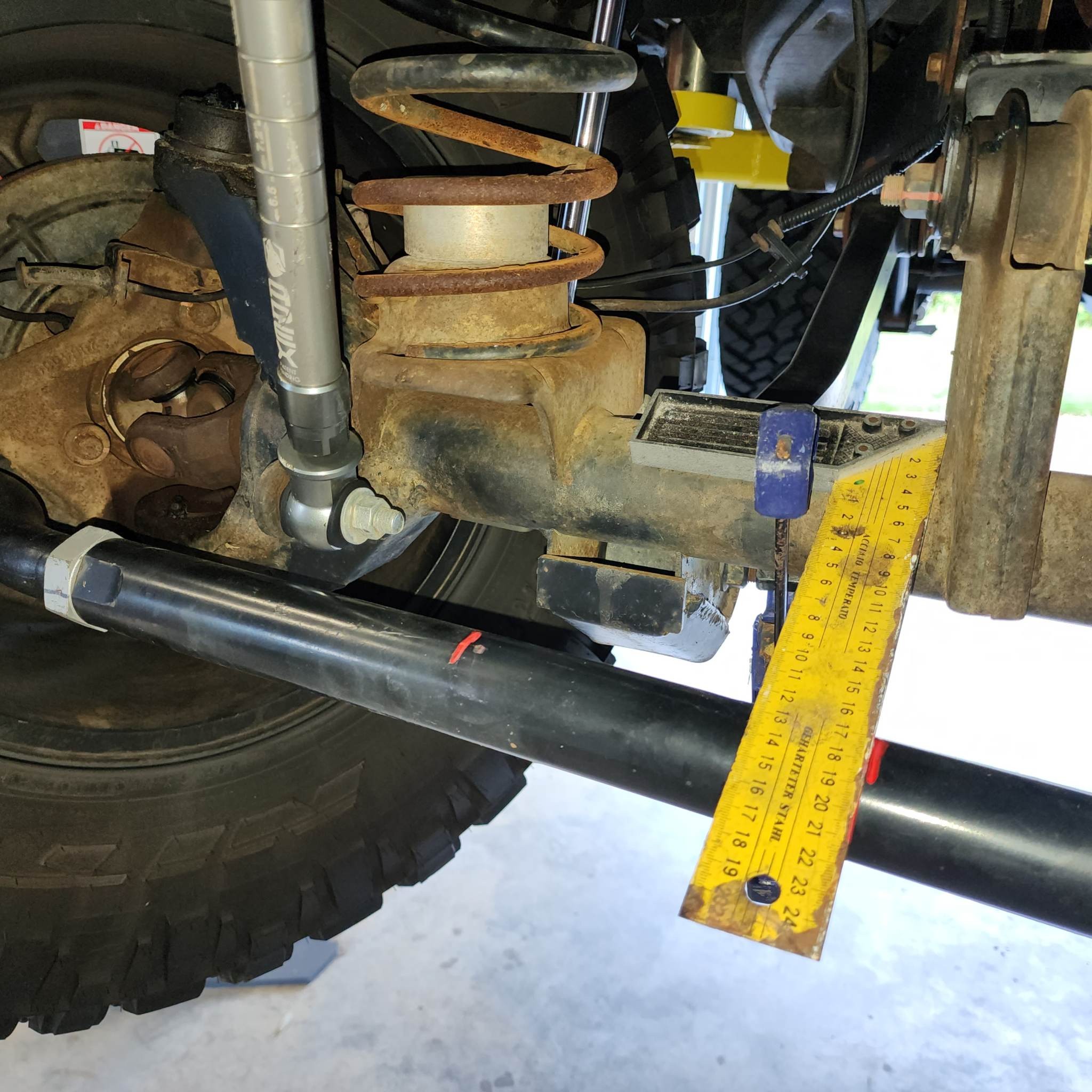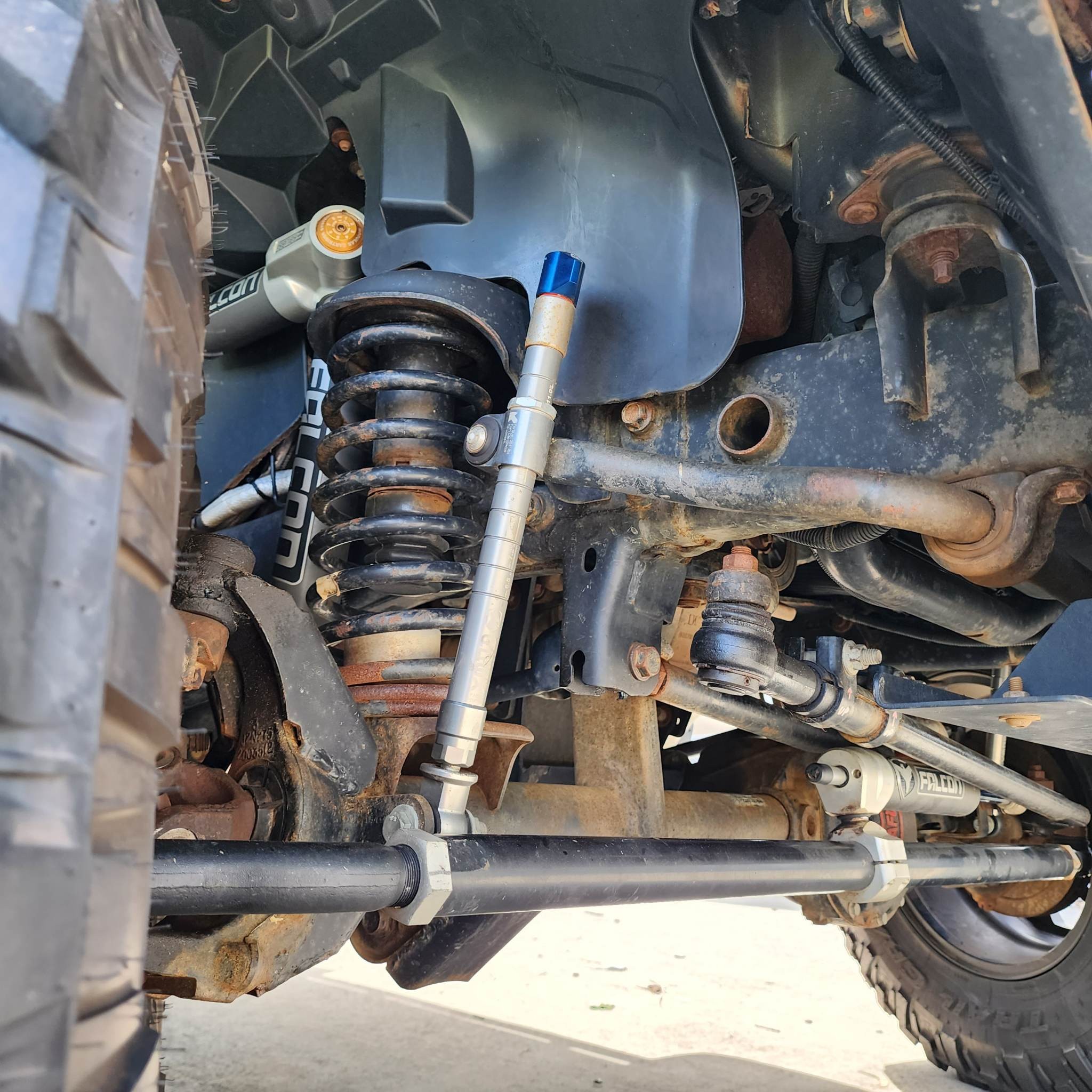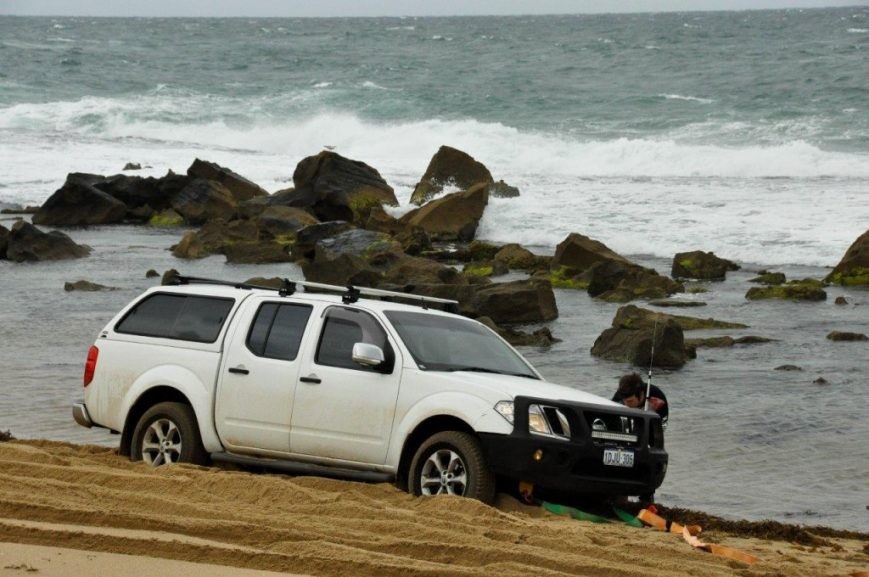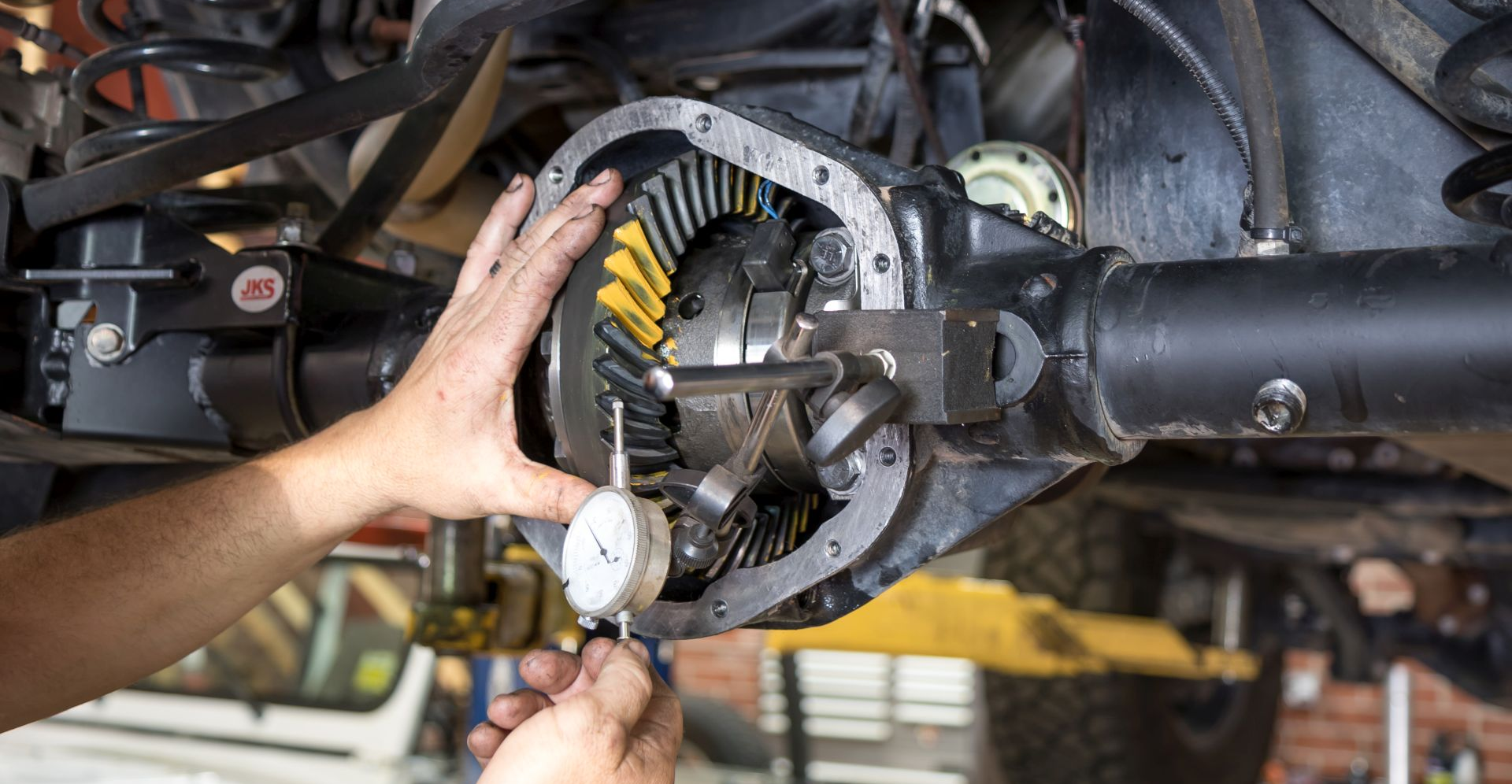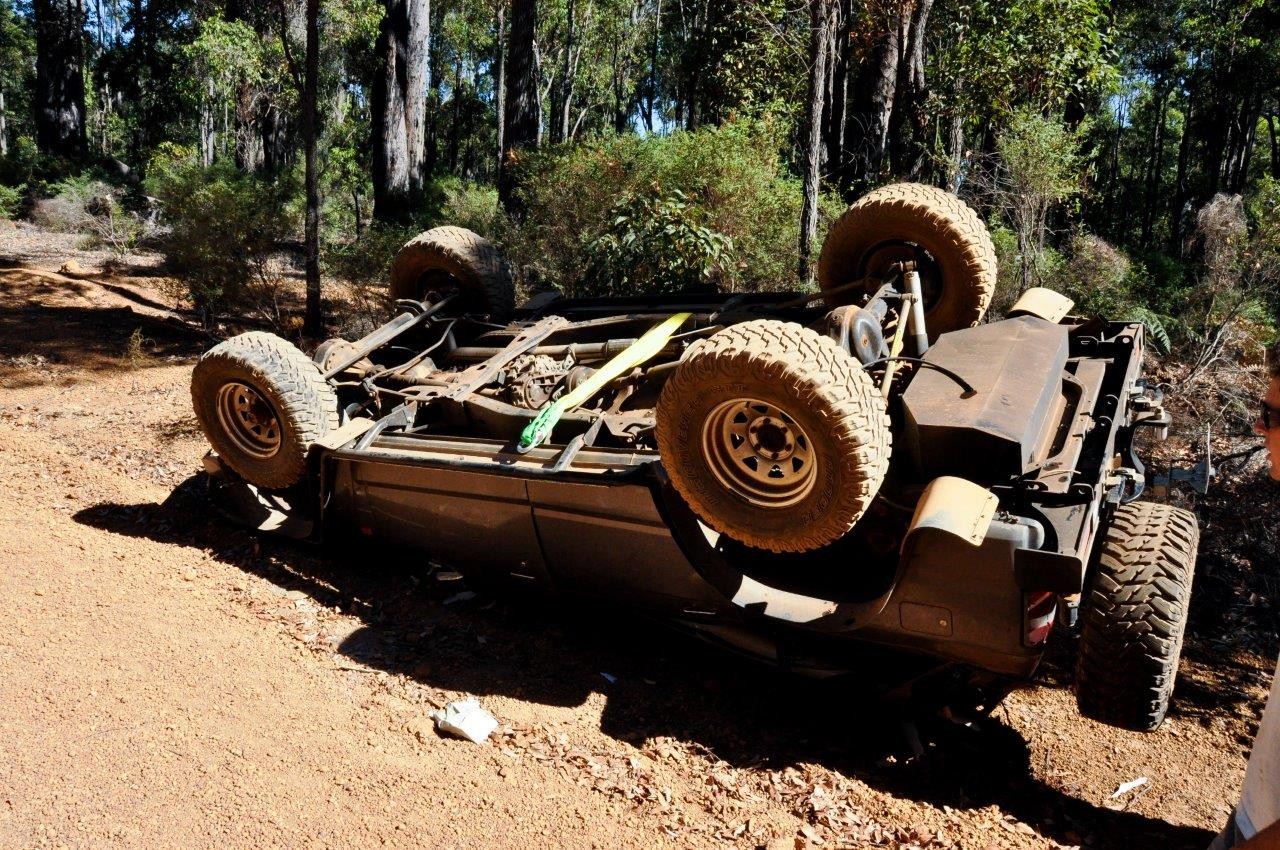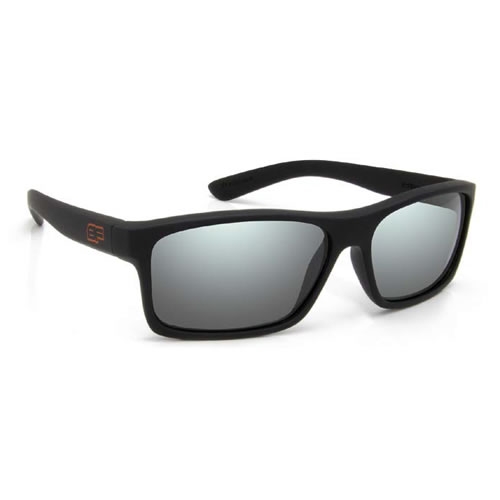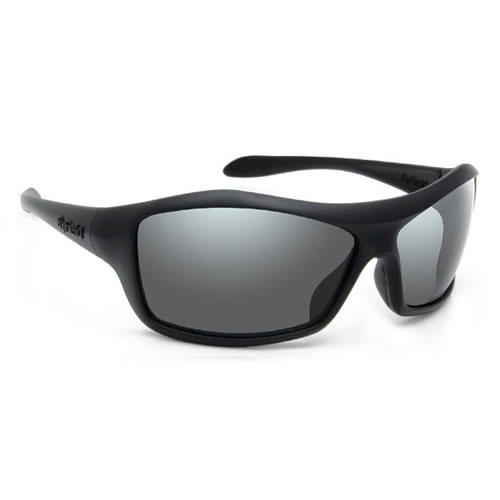Gravel Roads and Rocky Ground
Travelling Rocks and Uneven Terrain
Independent suspension usually provides a smoother ride in this type of terrain, but its design limits the wheel travel and ground clearance obtainable. It goes without saying that rocky ground ought to be tried at low speeds to minimise vehicle contact with the terrain.
This type of terrain is where vehicle type is important. Ground clearance and suspension travel are of the main criteria. High ground clearance allows the larger rocks to pass underneath without contacting vulnerable vehicle parts while nice suspension travel allows the wheels to stay in contact with the ground.
While independent front suspension usually provides a smoother ride, it's a variable ground clearance to the fronf diff. As the front wheels hit a bump, the wheels rise up to absorb the bump. However the diff remains in the same relative position, effectively reducing the ground clearance under the diff. This may finish up in the diff hitting the ground, although the hindrance under the diff was only half the height of the static ground clearance.
Live axle front suspension usually does not provide as smoothe a ride as independent front suspension. However lots of live axle suspensions are now fitted with coils than leaf suspension, which significantly improves ride comfort. The advantage of live axles when off road is that when the wheels hit a bump, the whole axle rises with the wheels to absorp the bump. This maintains the same clearance from the diff to the ground.
While this is an advantage off-road, the fact the weight of the whole axle and diff is constantly moving with any bumps leads to a rougher ride, compared to independant front suspension.
When giant drop-offs or ledges are encountered, they can be tackled at an angle to permit wheel at a time to mount the hindrance. Bear in mind how this will affect the position of the vehicle as turning at an angle to a down hill ledge may lead to the side rollover angle being reached.
Gravel Roads
If a sudden hindrance e.g. a kangaroo, appears it is very important not to swerve while braking. This goes for any road surface & not gravel roads. However it is more critical on gravel roads as one time a skid or slide starts, it is impossible, if not impossible, to regain control. There's exceptions to this rule such as a van heading straight for you at high speed. It is better to keep away from a collision with the van & take your chances hitting a roadside object than to have a head-on collision. However, neither of these options are attractive & it is for better to be travelling at a safe speed for the conditions.
Travelling on long straight stretches of gravel roads can lull the driver in to a false sense of security. Modern 4WD's can make a comparatively rough road appear smooth with their long travel suspension & sound deadened interiors. Speed creep can occur in these circumstances & when a bend is encountered the high centre of gravity in most 4WD's may cause you to cross to the other side of the road or it can lead to a high risk of rollover.
Corrugated gravel roads may cause extreme vibrations that con cause vehicle destroy as nuts rattle off & vibrations destroy electrical parts. It is common for glass food containers to shatter even when stored in eskies. The key to minimise these issues is to find the right combination of vehicle speed & tyre pressures.
In part-time 4WD's it is best to make use of 4WD on gravel roads to gain the better traction & road-handling of 4WD. Gravel roads provide slip not to cause any transmission windup issues. It is not necessary to make use of the centre diff lock of permanent 4WD's on gravel roads.
After driving long distances on poor quality roads, it is a nice suggestion to check all nuts & bolts to see they haven't vibrated loose. It is important to check all suspension parts. The simplest way is to make use of an adjustable spanner & when a loose nut or bolt is found, use the proper size spanner to tighten it than risk burring the head.
Increasing vehicle speed until it 'planes' over the corrugations con reduce vibration significantly, but the planing speed may be high for the driving conditions. Depending on the corrugations, planing speed is around 60-80 km/h. Lowering tyre pressures reduces vibration as the tyre sidewalls act as shock absorbers. However this causes the tyre to heat up & can lower tyre life or even cause tyre failure. It is sometimes better to sacrifice tyre life & lower tyre pressure to reduce the destroy being caused to the vehicle, as well as the comfort of the vehicle’s occupants.
Dust Environment
The largest issue area for dust intake is from the rear tailgate. Check that the rubber seals are in nice condition and that they seal when closed
When driving on dusty roads, its a nice suggestion to have all of your windows closed and the ventilation control set to outside air with the fan on high. This pressurises the vehicle interior slightly and helps reduce the amount of dust sucked in to the vehicle. When another vehicle approaches, move the ventilation control to "recirculate" to cease dusty air coming in. Keep in mind to move the ventilation back to outside air one time you have passed through its dust trail or else the pressurisation effect will be lost. In hot weather, vehicles without air-conditioning must make a choice between minimising dust intake or winding the windows down.

